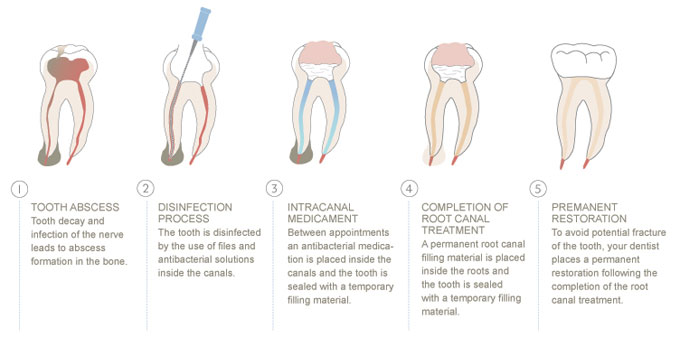What is a Root Canal?
A root canal is a treatment used to repair and save a tooth that is badly decayed or becomes infected. During a root canal procedure, the nerve and pulp are removed and the inside of the tooth is cleaned and sealed. Without treatment, the tissue surrounding the tooth will become infected and abscesses will form.
“Root canal” is the term used to describe the natural space within the center of the tooth. The pulp (tooth nerve) is the soft tissue within the root canal space.
Endodontics is a specialty of Dentistry that deals with diseases of the dental pulp and its supporting structures. Endodontists are Dentists with special post-graduate training in this field. Endodontists are also experienced at finding the cause of oral and facial pain that has been difficult to diagnose.
Although General Dentists can perform Endodontic treatment, patients are often referred to an Endodontist when the case is complicated or more difficult than usual.
In order to understand Endodontic treatment, it helps to know something about the anatomy of a tooth. Teeth have several layers. The outside layer of the tooth is composed of a hard layer called Enamel. Enamel is supported by an inner layer called Dentin, which has at its center a soft tissue known as the Pulp.
The pulp contains blood vessels, nerves, and connective tissue that are responsible for forming the surrounding Dentin and Enamel during tooth development. The pulp receives its nourishment supply from vessels which enter the end of the root. Although the pulp is important during development of the tooth, it is not necessary for function of the tooth. The tooth continues to be nourished by the tissues surrounding it even after the pulp is removed.
